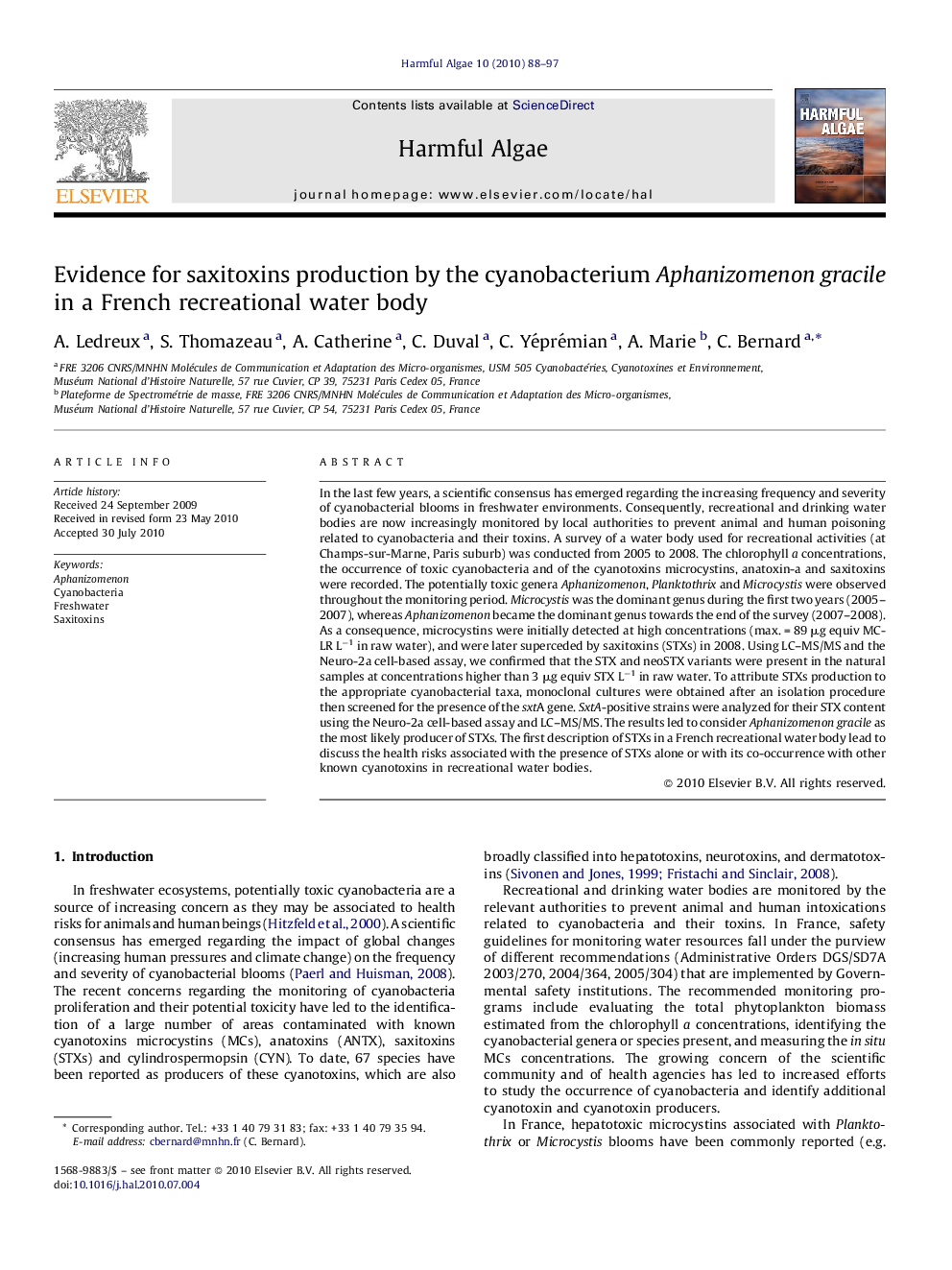| کد مقاله | کد نشریه | سال انتشار | مقاله انگلیسی | نسخه تمام متن |
|---|---|---|---|---|
| 4545860 | 1327475 | 2010 | 10 صفحه PDF | دانلود رایگان |

In the last few years, a scientific consensus has emerged regarding the increasing frequency and severity of cyanobacterial blooms in freshwater environments. Consequently, recreational and drinking water bodies are now increasingly monitored by local authorities to prevent animal and human poisoning related to cyanobacteria and their toxins. A survey of a water body used for recreational activities (at Champs-sur-Marne, Paris suburb) was conducted from 2005 to 2008. The chlorophyll a concentrations, the occurrence of toxic cyanobacteria and of the cyanotoxins microcystins, anatoxin-a and saxitoxins were recorded. The potentially toxic genera Aphanizomenon, Planktothrix and Microcystis were observed throughout the monitoring period. Microcystis was the dominant genus during the first two years (2005–2007), whereas Aphanizomenon became the dominant genus towards the end of the survey (2007–2008). As a consequence, microcystins were initially detected at high concentrations (max. = 89 μg equiv MC-LR L−1 in raw water), and were later superceded by saxitoxins (STXs) in 2008. Using LC–MS/MS and the Neuro-2a cell-based assay, we confirmed that the STX and neoSTX variants were present in the natural samples at concentrations higher than 3 μg equiv STX L−1 in raw water. To attribute STXs production to the appropriate cyanobacterial taxa, monoclonal cultures were obtained after an isolation procedure then screened for the presence of the sxtA gene. SxtA-positive strains were analyzed for their STX content using the Neuro-2a cell-based assay and LC–MS/MS. The results led to consider Aphanizomenon gracile as the most likely producer of STXs. The first description of STXs in a French recreational water body lead to discuss the health risks associated with the presence of STXs alone or with its co-occurrence with other known cyanotoxins in recreational water bodies.
Journal: Harmful Algae - Volume 10, Issue 1, November 2010, Pages 88–97